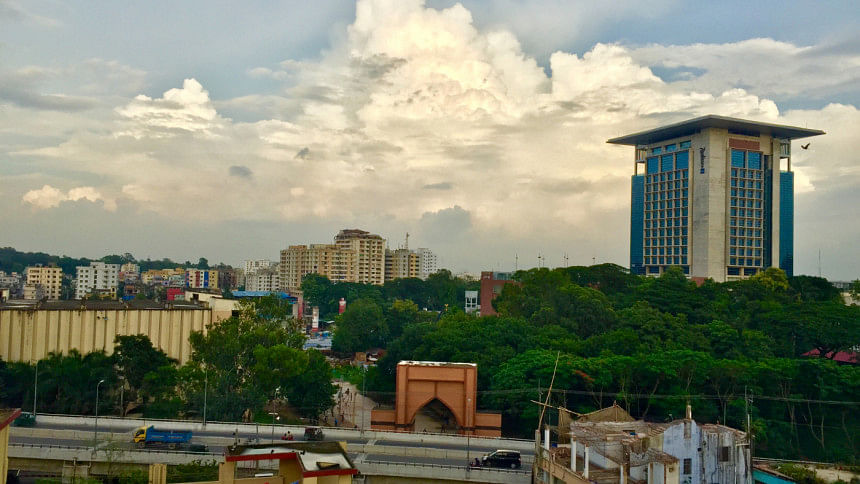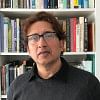SDGs, the tyranny of sameness, and a lesson for World Cities Day

Today is World Cities Day (WCD). In 2013, the United Nations General Assembly designated October 31 as WCD to build global awareness of the challenges that cities around the world face. The day serves as a reminder of the planet's contested urban future and how it will unfold for more than half the world population (4.4 billion in 2020).
The world's urban future is full of challenges. But one of the greatest among them is a simple but profound one: the universalisation of urban problems and their generic solutions. The United Nations describes the Sustainable Development Goals (SDGs) as "the blueprint to achieve a better and more sustainable future for all." The SDG #11 focuses on "sustainable cities and communities." A blueprint is great, but, when not used with caution and introspection, it often tends to bureaucratise and homogenise the problems, as if by following certain universal prescriptions one can mitigate challenges as culturally, socially, and anthropologically complex as the city.
I have seen in way too many meetings and seminars the uncritical and overly devotional reception of the SDGs as a complete panacea, a one-size-fits-all solution for cities across continents. Again, the SDGs are great guidelines, but they are only the first step in addressing a city's unique advantages and disadvantages. But when that first step is accorded the teleological status of prophetic commandments, we are doomed to see clones of a "master city" everywhere. The neoliberal economy perpetuates uniformity as an ideological tool to create a seamless flat world for uninterrupted capital movement. Despite their good intentions, the advocates of the SDGs can often become unknowing facilitators of Wall Street bosses who promote generic cities as part of their design to dominate world finances. Sameness facilitates the extractive economy of global corporations but not the local people and their cities. To resist this trap, it is important to keep in mind that the SDGs are meant to be a reminder not solutions.
The American urbanist William Whyte once said, "It is difficult to design a place that will not attract people. What is remarkable is how often this has been accomplished." Whyte's lament is against the city's unattractive genericness that fails to appeal to people. When people just live in a city without feeling ownership of their city, without feeling proud of their city, economic growth could only be a superficial indicator of their wellbeing.
In A Tale of Two Cities, Charles Dickens wrote, "We'll start to forget a place once we left it." I always wondered what he meant by it. But I am tempted to interpret Dickens this way: If you do not remember a city when you leave it, it can never be a good city. We need to understand that each city has a distinct set of perils and promises that warrant careful considerations in its own economic, cultural and political contexts. When we develop a city based on its inherent qualities—geographic, cultural, social—we can build the real city with people who belong. We can develop a city with which could be called "organic economy."
An organic economy is the one that flourishes with local resources, local strengths, local entrepreneurships, while also acquiring the courage to negotiate the global in its own terms, not terms imposed by power-wielders in the Global North. By no means, this is localism or self-glorifying parochialism, rather a celebration of the ways the local can thrive by both meeting and resisting global demands. This is what I would like to propose as a point of contention for this year's World Cities Day.
Let me make a case for Bangladesh. There is an alarming trend in the country. I have seen how mayors across the country want to transform their city in the image of Dhaka. They want to clone Dhaka's prosperity—showcased by flyovers, large shopping malls, glass-clad hotels and hospitals, overbuilt parks, and multistoried apartment blocks. They do not need a mini-Dhaka to be proud of. Rather, they need to look inward and build their cities with a vision rooted in their own territorial qualities, their own myths, histories, rivers, hills, stories, songs, fruits, vegetables, and people.
Consider Sunamganj in the Sylhet Division. It is a blissful town with a unique geography, crisscrossed by beautiful rivers and canals, interrupted by the marshy wetland ecosystems of haors, and hemmed in between hills. The Surma River is its lifeline. It is also a city of Dewan Hason Raja (1854-1922), the mystic poet and songwriter, whose literary work embodies the genius loci of this sublime, picturesque region. A thoughtful, self-confident Sunamganj mayor would be swayed by the development possibilities of "Charilam Hasoner nao," rather than the ostentatious glass boxes of Gulshan Avenue. She or he could easily develop a ecology-conscious tourism economy revolving around the haors.
Every time I go to Barisal I bleed. The "Venice of Bengal" is being developed as a crass prototype of the capital. Misguided development prescriptions justify filling up canals to create jomi for monotonous housing projects. Barisal does not have to be a mini-Dhaka. It can be Barisal, prospering with its own organic economy. What is required is some indigenous audacity as to how to combine Barisal's unique geographic and cultural characteristics, on the one hand, and a development vision that could emerge from them, on the other.
But often the lure of Dhaka or Smart City is too great not to be seduced. Too many mayoral offices have windows that open toward Dhaka and sometimes even Singapore. The tyranny of conformity and sameness must be resisted with the power of local talents and organic thinking. Sometimes architects and planners from Dhaka go to smaller cities and seduce their mayors with generic visions of progress, camouflaged with the objectivities of SDGs and snazzy gloss of Smart City. This is unfortunate.
Think of Chattogram, the city where I grew up. Chattogram's identity politics has always been driven by various claims of "uniqueness." The uniqueness of its geography, its urban origin, its local dialect, its complicated "melting-pot" racial history, its multi-faith social amalgamation, its history of anti-British movement, its Porto Grande global attraction through the ages, among others. Uncharacteristic mountainous terrain in a predominantly flat deltaic country has always been an essential part of the city's mythology. The Chinese traveler poet Hsuan Tsang's 7th-century depiction of the city as "a sleeping beauty emerging from mists and water" was no doubt a reference to Chattogram's hilly idyll.
Legend has it that the Buddha came to a vihara or a chakrashala located in Patiya, a southern town of greater Chattogram, employing his miraculous powers for disembodied travels. According to some historians, Buddhism spread to Chattogram during the time of the Buddha himself, over twenty-six centuries ago, when Socrates was not yet born, and the Parthenon was not yet built in Athens! The presence of many viharas in the city lends credence to the suggestion that the name of Chattogram comes from chaitya (a Buddhist vihara).
Within a century after Islamic forces under the leadership of Tariq ibn-Ziyad crossed Gibraltar in 711 CE to colonise most of the Iberian Peninsula, Arab sailors began to arrive on the shores of Chattogram. They left enduring marks in the port city's life and local dialect. Place names, such as Alkaran (Al Qarn) and Sulak Bahor (SulukalBahar), demonstrate Arab influence. The use of negative before a verb in chatgaiya, Chattogram's local dialect, is another instance of Arabic contribution to the culture of the port city.
Portuguese explorers in the sixteenth and the seventeenth centuries frequently called Chattogram the "City of Bengala." Duarte de Barbosa, one of the earliest Portuguese writers to offer a geographical account of the African and Indian coasts in the early sixteenth century, described Chattogram as a natural attraction for traders, missionaries, and fortune-seekers from far-flung places. It was their gateway to the East.
The port city's history is richly crisscrossed by actors of all sorts: Buddhist mendicants, Hindu zamindars, Arab saints, Mughal governors, European traders, British colonialists, anti-British revolutionaries, Western development experts, wealthy industrialists, national leaders, and globally known entrepreneurs. When history becomes a jigsaw puzzle of people, events, places, and narratives, myths thrive!
What is the experience of Chattogram today? It has replicated Dhaka's chaos. If you go around the city, you will not feel that this is a pedigreed city, a city with a thousand stories. The same generic ugliness is everywhere. Recently, I tried my best to tell a former mayor that he had the political power to initiate change, perhaps beginning with Lal Dighir Math, one of the earliest sites for Bangabandhu to introduce the historic Six-Point Movement, the foundational document of Bangladesh's independence. Develop Lal Dighi as a historic site. Put it on the map. Celebrate the city's stories, its uniqueness. It did not work, as usually.
Why are the great cities of the world great? They have one thing in common. They are all different. New York City, Barcelona, Rome, Paris, London, Amsterdam, Prague, Tokyo, Marrakesh, and Kolkata may not be paradise, but they have interesting stories to tell. They celebrate, in different degrees, their uniqueness and build an economy based on and around that uniqueness. That is how they meet the SDGs.
What would it take to hear the stories of Khulna, Rangpur, and other cities in Bangladesh? How can we rejoice their individuality with the power of architectural imagination, urban planning, and compatible economic policies?
Adnan Zillur Morshed is an architect, architectural historian, and professor. Email: [email protected]

 For all latest news, follow The Daily Star's Google News channel.
For all latest news, follow The Daily Star's Google News channel. 



Comments